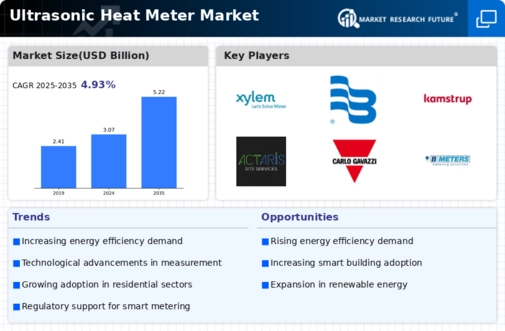Ultrasonic Heat Meter Market Summary
The Global Ultrasonic Heat Meter Market is projected to grow from 3.07 USD Billion in 2024 to 5.22 USD Billion by 2035, reflecting a robust growth trajectory.
Key Market Trends & Highlights
Ultrasonic Heat Meter Key Trends and Highlights
- The market is expected to witness a compound annual growth rate (CAGR) of 4.93% from 2025 to 2035.
- By 2035, the market valuation is anticipated to reach 5.22 USD Billion, indicating substantial growth opportunities.
- in 2024, the market is valued at 3.07 USD Billion, laying a solid foundation for future expansion.
- Growing adoption of ultrasonic heat meters due to increasing energy efficiency regulations is a major market driver.
Market Size & Forecast
| 2024 Market Size | 3.07 (USD Billion) |
| 2035 Market Size | 5.22 (USD Billion) |
| CAGR (2025-2035) | 4.93% |
Major Players
Diehl Metering, Sensus, Badger Meter, Apator Powogaz, Ultrakust, Kamstrup, Actaris, Carlo Gavazzi, BMeters, Zenner, Hoffer Flow Controls, Landis+Gyr, Itron, Elster, Minol






















